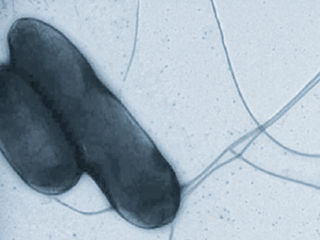"The Sword and the Shield" - How bacteria develop their virulence by creating multiple variants
Advertisement
Researchers at Institut Pasteur and the French National Institute of Health and Medical Research (Inserm), in association with the Imperial College of London, recently explained why Shigella flexneri bacteria, which cause fatal dysenteries, have several variants (serotypes), thus optimizing their virulence.
Shigellosis is the most deadly of the diarrheic diseases. In order to effectively fight this disease and develop therapeutic or vaccine weapons against it, it is essential to understand what mechanisms the bacteria use to get through the intestinal barrier and invade cells. Researchers from the Molecular Microbic Pathogenesis Unit (Inserm Unit 389), directed by Philippe Sansonetti at Institut Pasteur, had recently demonstrated that the bacteria invades intestinal cells by using a molecular syringe (type III secretion device), in which the needle, like a sword, is capable of piercing through a cell wall, enabling the syringe to inject the proteins that have pathogenic effects. Previously, it was known that Shigella protected itself from the human immune system using a "shield," a sort of molecular coat comprised of long sugar chains that envelop the bacteria (lipopolysaccharides or LPS). The paradox of this system is that the LPS, which serve as a shield, partially cover the syringe, thus decreasing the bacteria's invasion abilities.
Philippe Sansonetti, with two collaborating teams at Institut Pasteur (Electron Microscopy Platform and Biomolecular Magnetic Resonance Unit) and Christophe Tang of the Imperial College of London have discovered the ingenious strategy used by the Shigella bacteria to counter this paradox and ensure its survival to invade the organism.
Researchers have shown how the bacteria was capable of transforming its shield to promote the syringe action. Through a simple enzymatic action, the bacteria are able to modify the protective molecules (LPS) to shorten them. This change decreases the thickness of the bacterial sword without altering its effectiveness and allows the molecular syringe to emerge, thus facilitating its action. By revealing this strategy, the researchers have most importantly discovered that it could be at the root of the various Shigella serotypes. All of them modify their shield in a slightly different manner, which results in specific "molecular signatures." In the current context of vaccine research, which aims to protect against the different pathogenic Shigella serotypes, an understanding of this phenomenon is fundamental.
Original Publication: N.P. West, P. Sansonetti, J. Mounier, R.M. Exley, C. Parsot, S. Guadagnini, M.-C. Prévost, A. Prochnicka-Chalufour, M. Delepierre, M. Tanguy, C.M. Tang; "Optimisation of virulence functions through glucosylation of Shigella LPS", Science 2005.



























































